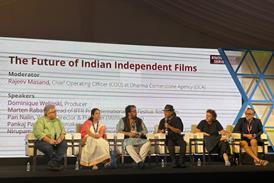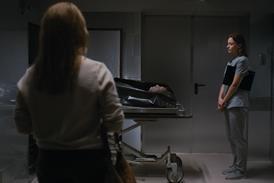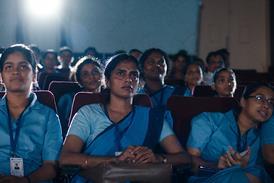SCREEN FILM SUMMIT: Exhibition, distribution and production execs say digital needs to be embraced if cinema hopes to remain relevant.
The film industry needs to embrace changing audience habits brought about by the digital age if cinema is to remain “relevant” into the future.
That was the message from UK independent exhibitors and distributors talking on a panel entitled “The Changing Audience” at the Screen Film Summit on Monday.
“The task for us is to make cinema relevant in a time when everything is changing. It’s important to embrace all the other ways people can see films,” said Clare Binns, director of programming and acquisitions at UK art-house network Picturehouse Cinemas.
“We’re doing it in many, many ways. We were one of the first companies to bring alternative content to the UK with the Met Opera. We’ve gone into distribution. We’ve done day and date distribution — A Field in England was in every platform in the UK. That was the first film ever to do that.”
“We just started something called “Our Screen” which allows people to book films of their choice into cinema slots. The most important thing is to make the cinemas somewhere you can see a film, where you can see alternative content, you can see or listen to music, you can have something to eat… where you can get the best of everything on offer out there. It’s also about not being frightened of change.”
“What I would say is that why this has happened is because of digital. If digital hadn’t happened we would still be going down exactly the same path that everyone went down for a hundred years,” said Binns.
She noted that while the changing audience landscape posed a conundrum for the bigger, mainstream exhibition chains, such as Picturehouse’s parent company Cineworld, it offered also opportunity for some parts of the industry.
She cited the example of Elaine Constantine’s Year 1970s-set drama Northern Soul, about two men from the north of England whose lives are changed when they discover American soul music, which had been booked onto very few screens via traditional channels but found its audience through “cinema-on-demand” screenings across the UK.
“More and more people started booking the film themselves and now it’s up to half million at the box office,” said Binns.
Andy Whittaker, founding chairman of independent distributor Dogwoof - which is feting its 10th anniversary this year - said digital distribution had been at the heart of the company’s strategies since the early days.
“We’ve always looked at digital, partly out of necessity. We started as a small company, specialising in documentary. Digital for us was a great way to promote our films — sticking a trailer up on a YouTube can be a great way to get audiences to watch your films,” he said.
Theatrical releases, however, remained an integral part of Dogwoof’s release strategy, he added, whether it be through one-night, event-style screenings or more traditional runs.
“For us it’s always a case of trying to understand the audience and working with people like YouTube, Netflix, Apple as well as the cinemas to find the combination that maximises revenue,” he explained.
Other panelists on Monday’s panel included BFI director of digital Edward Humphrey, who oversees the film institute’s BFI player website and Liza Marshall, managing director of Archery Pictures.
Humphrey suggested that the digital distribution scene was entering a third more mature phase, after a first and second phase in which first the industry, and then the audience, learned about the various platforms and models available.
“We’re entering a third stage in which audiences understand the different models and platforms and we can move the conversation on and be more discerning in terms of which audiences look at what platforms and which models work best,” said Humphrey.
























1 Readers' comment